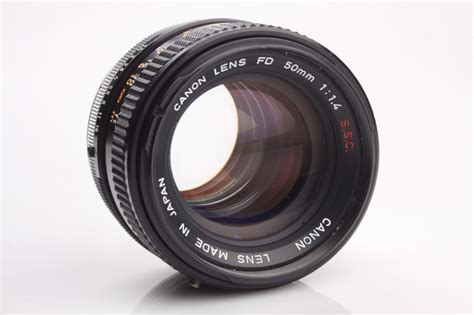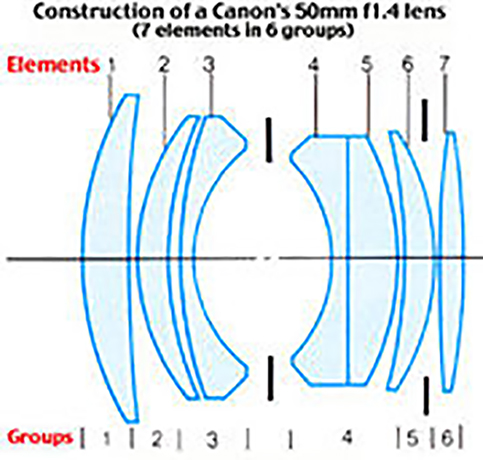The Lens details of a series of images taken by Steve Cushing on mirrorless camera.
Fitting is a bayonet Canon (FD) mount with a 42mm
Flange Distance - this lens will fit and achieve focus to infinity mirrorless cameras but not DSLRs.
HistoryCanon started its career in the 30's with copies of the Leica-III with kind of a Contax bayonet mount. Both Leica and Contax were not protected by Japanese patent law then. Its name was KWANON, a goddess of charity - and probably there was a need to look merciful at the making of these first Japanese cameras, of which less than a handful is preserved.
But that was to change soon! After 1945 all German abroad patents were canceled effected by the lost war and law of nations. It was allowed to copy German pre-war-products in any matter and companies in the whole world did that without bad conscience. NIKON who made optical products for Japanese military during the war now launched excellent copies of the pre-war Contax (with very similar, but not complete compatible bayonet), which were enhanced in quick cycles and shortly becoming better than the original -- the more so as ZEISS had problems to relaunch production in the post-war era with Carl Zeiss Jena and IKON in the East part of Germany occupied and exploited by the Russian for war reparation. CANON adhered to the West-German archetype LEICA with lenses in the same screw mount (M39 aka Leica Thread Mount or LTM). In the beginning CANON only manufactured cameras while Nikon made the lenses. Since 1947 Canon made the lenses for their own cameras - at the beginning copies of the German (Zeiss) Tessars, Sonnars and Triotars for simple use, and X-Ray cameras.
After the war, with many plants bombed and the Russians taking over East Germany, production cost for making lenses were a lot cheaper in Japan. Even before the war German optics companies started to partner with Japanese companies to manufacture optic lenses used in industry and in cameras. Japan as one if not the only industrialised Asian nation in the world at that time, had the capability and the cheap labor to entice German manufacturers to move some of their production there. Similar to what is happening right now with China.
Together with this due to new post-war Japanese law and export control, Japanese optics companies were effectively out of the business from military purpose optics for long time. So, company that was making gun sight for fighter plane or war ships optics for battleship had to start competing on civilian market to survive.
European manufacture did not suffer this problem as much as Japanese did, and they still had lucrative military optics market as soon as cold war kicked in. Even decade after Japanese started to return to scientific or partial return to military optics market, they still had to make majority of money in consumer, industrial, or medical optics market.
The Japanese soon became so adept at making lenses originally for the Germans and now for their own domestic use, that companies like Nikon, Olympus, Minolta started. Canon was an off-shoot of Nikon. And so, the Japanese came to dominate the camera as well as the lens market. The Germans still have Leica of course which is considered the most expensive camera system in the world.
The company which is now recognised world-wide as Canon began its life as Seiki-Kōgaku Kenkyusho - Precision Optical Instruments Laboratory - or
精機光学研究所. According to the Canon Camera Museum history, the first laboratory of the company "...was founded in 1933 in a third-floor apartment of the Takekawaya Building in Roppongi, Azabu Ward, Tokyo."
The name Canon meant “Precision Optical Instruments Laboratory”. Initially Canon had a very close relationship with Nippon Kōgaku (Nikon), who supplied lenses for the cameras which Canon manufactured. The Nikkor 5cm f/3.5 lens was commonly seen on the Hansa Kwanon (Canon), which also had its rangefinder manufactured by Nikon.
The Hansa Canon was launched in 1936. It was not until the late 1940s that Canon started to manufacture their own lenses, after World War 2. Initially the lenses were labeled Serenar. This caused some confusion to customers as they were looking for a Precision Optical camera and a Serenar lens. So in the early 1950s the company and branding was changed to Canon.
Autofocus technology for example were really designed for the military so this was quickly adapted for civilian purpose in Japan but remained secret in the rest of the world as it was used for military purposes.
Japanese lenses can be divided intro entry level third party lenses, made by Soligor, Revuenon, Vivitar, Coslinar and others, mid range lenses made by smaller manufacturers, such as Makinon and Chinon and premium lenses, such as those made by Asahi Pentax and Fujifilm.
Other premium manufacturers like Canon produced lenses in their own native mounts others include Olympus, Minolta and Mamiya. Japanese lenses are considered the most reliable of these vintage lenses, with Asahi Pentax Takumar series coming on top of them all.
This LensDue to their incapability with Canon EF mount, Canon FD lenses have not enjoyed the same popularity as many alternatives, which fortunately for some of us using mirrorless full frame cameras makes them some of the best value for money vintage lenses.
When it comes to image quality, unlike many modern Canon EF versions, FD 50mm is not a boring lens. It has plenty of vintage lens character.
When it hits the sun, this lens flares absolutely beautifully, which the FD 50mm F1.4 produces high contrast, vibrant images with match modern lenses much better than some other vintage 50mm F1.4 lenses.
Lens In UseThis isn’t the sharpest lens wide open; the images are a little dreamy and lack critical sharpness (similar to Canon EF 50mm F1.4)
Pros:
- Incredibly affordable for a 50mm F1.4.
- Smooth focus ring with hard stops.
- Approx 200° focusing rotation for precise manual focusing.
- 17 click-stop aperture settings for precise exposure/depth of field adjustment.
- Multi-layer Super Spectra Coating for high contrast and consistent colour balance.
- Beautiful mix warm/purple flares for creative old-school look.
- 0.45cm closest focusing distance.
- Quirky Bokeh wide open.
Cons
- Not sharp wide open.
- Flares Easily.
- FD mount is a little fiddly making quick lens changes more difficult.
- Bokeh might not be to everyone’s taste.
- 8 blade aperture means that it’s not perfectly circular when aperture is stepped down.






